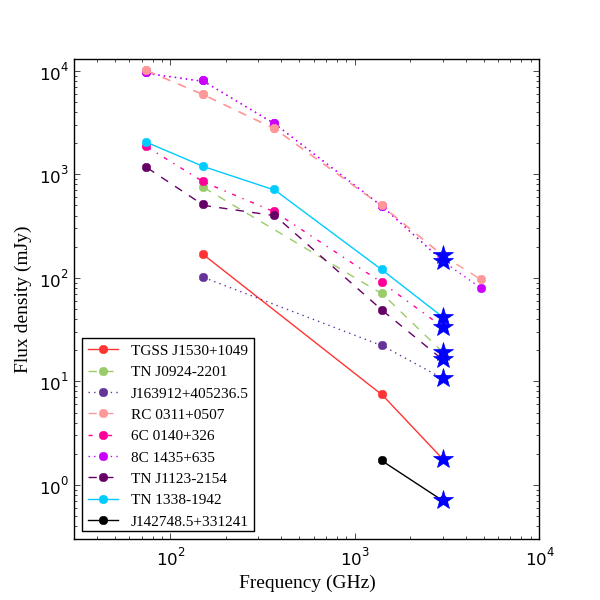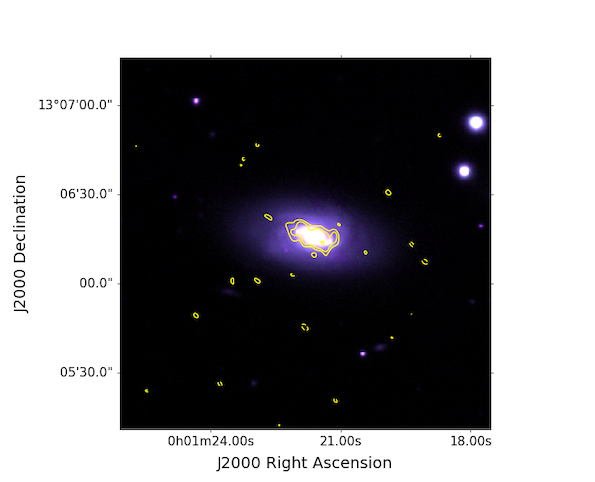Imaging Galaxies Through Time and Space

Figure 1: the known radio-bright (S(1400)>1mJy) 4<z<6 radio galaxies, and the highest redshift (z=6.1) radio-loud quasar J142748.5+331241 are all detected in VLASS (blue stars), demonstrating that VLASS can detect some of the first AGN in the Universe, even though most of them have very steep radio spectra (spectral indices < -1).
AGN and feedback
VLASS addresses key science regarding how the first stars, galaxies, and black holes formed. It is well suited to studying the formation and evolution of massive galaxies and the close relationship with their central supermassive black holes and will likely yield crucial insights into the feedback effect of AGN jets on the ISM of their host galaxies. The sensitivity and angular resolution of VLASS enable study of the entire AGN population, from classical radio-loud sources to radio-quiet AGN at low redshifts, and is sufficiently sensitive to detect luminous radio galaxies and quasars at z > 5 (Figure 1).
Star formation
VLASS is sensitive enough to detect star formation in the central regions of nearby star-forming galaxies (e.g. Figure 2), and ultra-luminous infrared galaxies (ULIRGS) to z ~ 0.5.

Figure 2: the nearby star-forming galaxy NGC 7803(z=0.018) imaged in VLASS (yellow contours) and PanSTARRS (g, r, i color).




Connect with NRAO